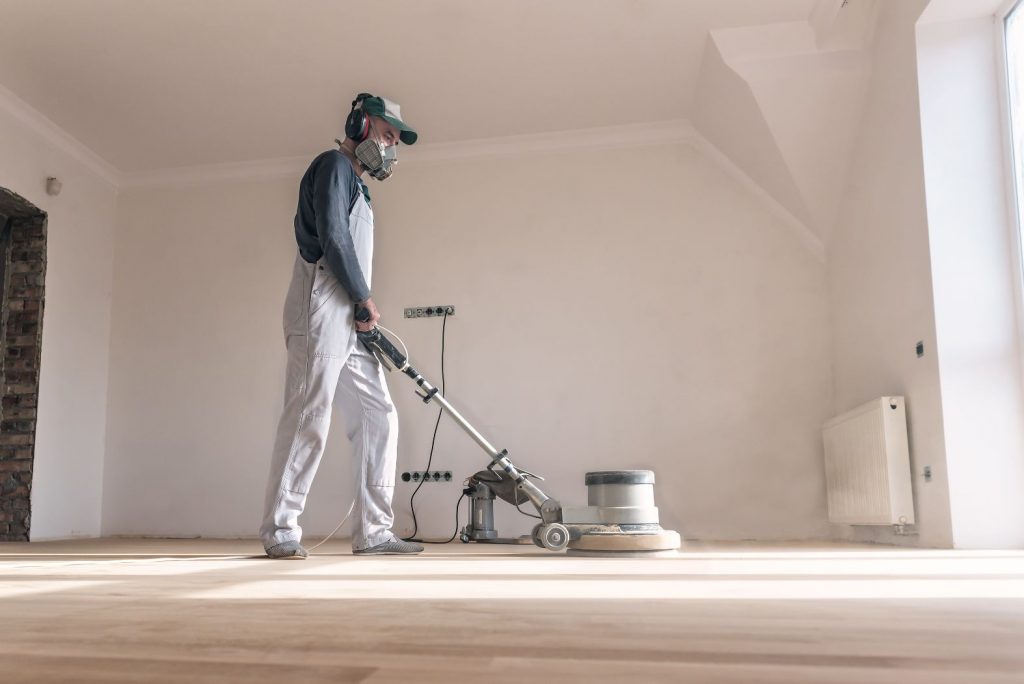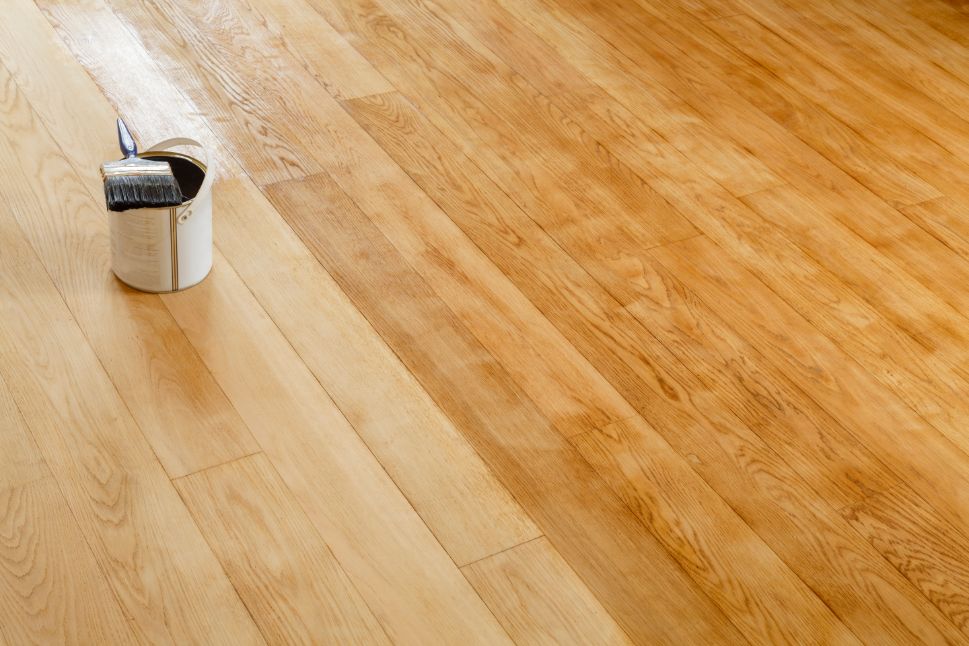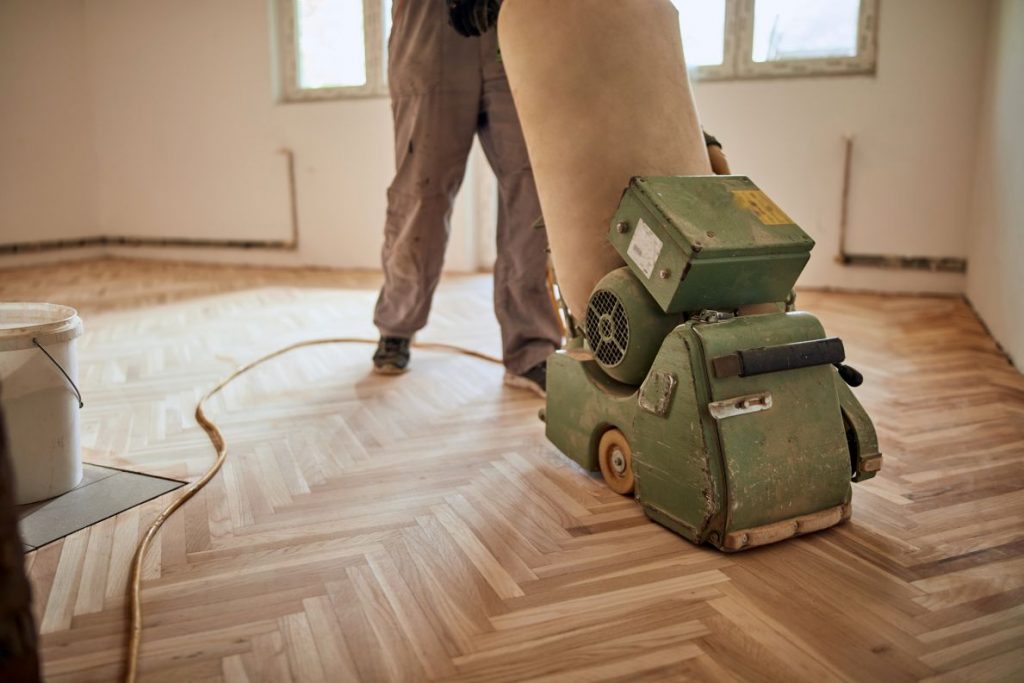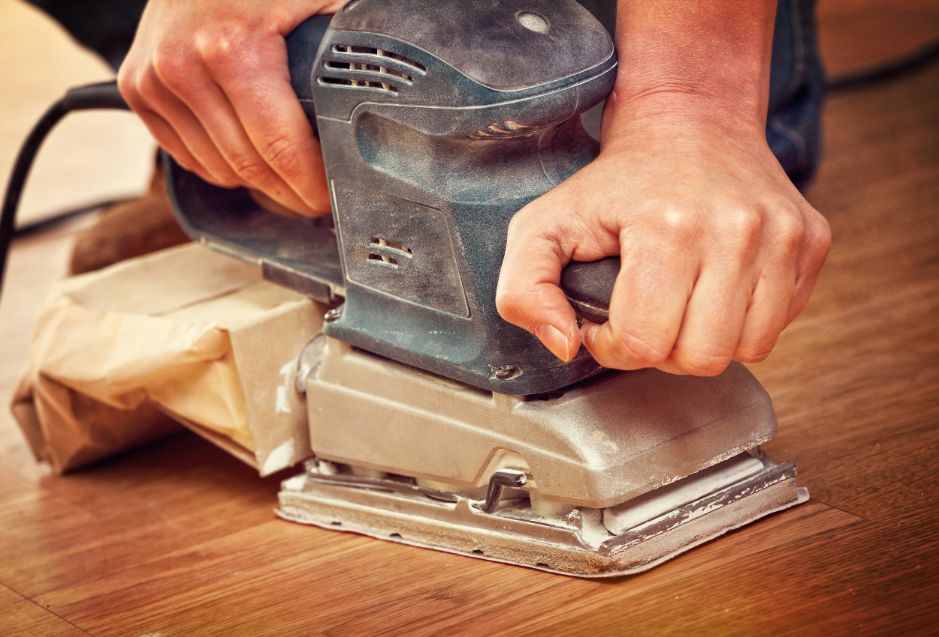A hardwood floor gives a prestigious look to a residential property, there’s no doubt about it.
That said, when scratches makes an appearance and the floor has lost its luster, the prestigious look is replaced by a faded appearance. Fortunately, there’s a simple and effective solution to restore your hardwood floor to its former glory: floor sanding and varnishing.

There’s no point in tearing up a floor that still has many good years to offer with a little sanding. Contact specialized floor restoration contractors to maximize the usefulness of your natural wood floor.
Soumissions Plancher explains the different sanding and varnishing techniques right here, and offers you 3 free quotes from professionals in the field.
Contents
What's involved in sanding and varnishing a hardwood floor?
Sanding and varnishing is a long-established technique for restoring hardwood floors. It involves removing the varnish, stain or oil that covers the floor, as well as a light layer of wood, to restore its appearance.
Hardwood floors can be sanded 3 to 4 times, depending on quality, species and thickness. That’s why a well-maintained, quality-coated hardwood floor can last for decades without any problems. Just leave the resurfacing to a qualified professional.
In fact, floor varnishing and sanding contractors have developed a dust-free sanding technique! This makes it possible to carry out floor restoration work without the major inconvenience of having to protect your furniture and clean your home afterwards.
Interested in restoring a floor by sanding and varnishing? We’ve prepared an overview of the costs involved in working with a professional contractor!
Prices for floor sanding and varnishing in the province!
Not just anyone can become a master in the art of sanding and varnishing floors.
While such jobs may seem simple, they require precise knowledge, experience and dexterity. And that’s why floor sanding comes with a price.

Here’s an overview of the costs associated with sanding and varnishing floors in the province of Quebec!
|
Flooring work |
Price |
|
Floor sanding |
1.60 to $2.00 /ft2 |
|
Floor sanding + varnishing |
2.35 to $3.00 /ft2 |
|
Sandblasting + Natural oiling |
2.70 to $3.10 /ft2 |
|
Dust-free floor sanding |
1.5 to $2.00 / sq. ft. *In addition |
|
Staircase sanding and varnishing |
45 / riser 60 / walk |
|
Contractor hourly rate |
95 / hour |
ATTENTION – Some additional charges may apply depending on the characteristics of your floor! Floors stained with glue, paint or some other hard-to-remove product may justify additional costs, since they complicate and lengthen the task of the sanding and varnishing contractor.
In any case, getting a personalized quote is the best way to compare precise prices for your project.
The steps involved in floor sanding and varnishing in Quebec!
Sanding a floor is best done when all the preparatory work has been done and the surface has been cleared for the contractor. Under these conditions, the work can be completed quickly, so it’s best to follow the steps in order when sanding and varnishing your floor.
Here are the main stages of floor sanding and varnishing in Quebec!
1) Seal the room and close ventilation
Even if you opt for dust-free sandblasting, there’s still a risk that particles will be released into the air during the work. That’s why it’s a good idea, at the very least, to close off the central ventilation to prevent the spread of dust. In the case of traditional sandblasting (with dust), it’s best to protect the furniture and seal the parts.
2) Remove baseboards and furniture
Baseboards and furniture interfere with the sanding and varnishing process. That’s why they must be removed before the contractor arrives, to avoid delays and expedite the sanding.
3) Floor sanding, varnish removal and dust extraction
Once the rooms have been cleared of clutter, the first step is to remove the varnish or product covering the floor surface. This is done using a specially designed sander.
4) Application of varnish or oil
Once the surface has been sanded and blasted, you’re ready to apply the new finishing product, whether varnish, oil, latex or stain. Be sure to choose a quality product that will last and not damage the wood species.
5) Curing and drying time
The work may be finished, but be careful! You’ll have to wait a while before you can walk on the floor. We’re talking about a cure time of 24 to 48 hours, depending on the type of product applied, before you can walk on the floor and put furniture on it.
And voila, the floor is sanded, varnished and practically as good as new in just a few steps. You’ll have peace of mind for several years before you need to sand and varnish again.
ALL the benefits of sanding and varnishing a wood floor
A hardwood floor is very expensive, both in terms of floor costs and labor. So, if your home is fortunate enough to be covered with such a flooring material, maximize its lifespan by sanding and varnishing it.

Why bother sanding and varnishing a wood floor? Because there are so many benefits to doing so, including these!
- Maximizes the life of a wood floor
- Removes varnish that has yellowed over the years
- Restoration of wood grain and appearance
- Removes scratches, blemishes and imperfections
Dust-free floor sanding - EVERYTHING you need to know!
Gone are the days when sanding a floor meant a cloud of dust. A dust-free floor sanding technique was developed some years ago.
But how does dust-free floor sanding work? Quite simply, the sander used collects the dust and prevents it from being dispersed into the ambient air. This system comes with an efficiency of up to 95-98%, considerably reducing the amount of dust thrown into the home.
What are the advantages of dust-free floor sanding? With this method, there’s no need to protect your furniture, seal off rooms or take extreme measures to protect your belongings from dust, because dust is almost non-existent.
The vast majority of floor sanding contractors now offer the dust-free option, so take advantage of it for your floor restoration project.
FAQ - Frequently asked questions about floor sanding and varnishing!
How often should a hardwood floor be sanded or varnished?
In general, hardwood floors should be sanded every 10 years. However, this depends on how the floor is used. For example, a home with pets and small children causes more damage to the floor, which may require more frequent sanding and refinishing.

Is it necessary to protect a floor from the sun and UV rays?
Floor varnish is indeed vulnerable to the sun’s rays. And while it’s impossible to stop UV rays, it’s advisable to move furniture and carpets regularly to ensure even wear. A protective film can also be stuck into windows to give the floor a chance, although curtains are effective enough to offer sufficient protection.
Can all wood floors be sanded and varnished?
Hardwood flooring is not the only wood floor covering that can be sanded. Some engineered wood floors can also be sanded if they are thick enough. However, engineered flooring can only be sanded once, whereas hardwood can be restored up to 3-4 times without any problem.
Can floating wood floors be sanded and restored?
No! Floating and laminate floors cannot be restored or sanded. Their “plasticized” finish does not permit such corrective work. When float is scratched, damaged or otherwise worn, it simply has to be replaced. The same applies to vinyl flooring.
Soumissions Plancher is here to find you a sanding and varnishing PRO!
With dust-free options and great prices, there’s no good reason to put off restoring your hardwood floor. Turn to the sanding and varnishing pros among Soumissions Plancher’s partner contractors.



